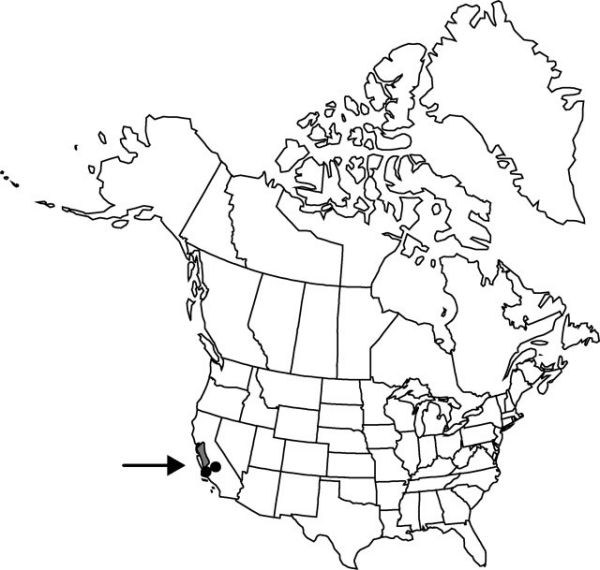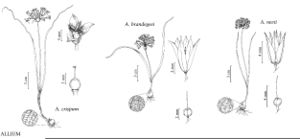Allium crispum
Pittonia 1: 166. 1888.
Bulbs 1–3, increase bulbs absent or ± equaling parent bulbs, never appearing as basal cluster, not clustered on stout primary rhizome, ovoid to globose, 0.9–1.5 × 0.9–1.5 cm; outer coats enclosing 1 or more bulbs, brown or gray, prominently cellular-reticulate, membranous, cells arranged in ± vertical rows, forming distinct herringbone pattern, transversely elongate, V-shaped, without fibers; inner coats white, cells obscure, forming distinct herringbone pattern or ± quadrate, transversely elongate, V-shaped. Leaves persistent, withering from tip by anthesis, 2–3, basally sheathing, sheaths not extending much above soil surface; blade solid, subterete or ± channeled, straight to arcuate, 13–30 cm × 1–3 mm, margins entire. Scape persistent, solitary, erect, solid, terete, 15–35 cm × 1–3 mm. Umbel persistent, erect, loose, 10–40-flowered, hemispheric, bulbils unknown; spathe bracts persistent, 2, 4–6-veined, lance-ovate to ovate, ± equal, apex acuminate. Flowers campanulate, 8–13 mm; tepals erect, rose-purple, lance-ovate to broadly ovate, unequal, outer longer and wider than inner, becoming rigid and keeled in fruit, margins of outer tepal entire, inner denticulate and distinctly crisped, apex acuminate, recurved-spreading at tips; stamens included; anthers yellow; pollen yellow; ovary crested; processes 3, central, 2-lobed, minute, margins entire; style linear, equaling stamens; stigma capitate, 3-lobed; pedicel 10–35 mm. Seed coat dull; cells minutely roughened. 2n = 14.
Phenology: Flowering late Mar–Jun.
Habitat: Clay soils, including serpentine
Elevation: 100–800 m
Distribution

Calif.
Discussion
Allium crispum is known only from the inner south Coast Ranges.
Selected References
None.
